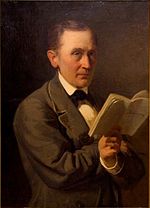
Back Култура на Естония Bulgarian Cultura de Estonia Spanish Eesti kultuur Estonian Viron kulttuuri Finnish Culture de l'Estonie French Estisk kultur NN Cultura da Estônia Portuguese Культура Эстонии Russian Kultura e Estonisë Albanian Estonya kültürü Turkish
| Part of a series on the |
| Culture of Estonia |
|---|
 |
| People |
| Languages |
| Cuisine |
| Festivals |
| Religion |
| Sport |


The culture of Estonia combines an indigenous heritage, represented by the country's Finnic national language Estonian, with Nordic and German cultural aspects. Over the centuries, the culture of modern Estonia has been significantly influenced by that of the Germanic-speaking world.[1] Due to its history and geography, Estonia's culture has also been influenced by the traditions of the Baltic Germans and Scandinavians as well as the neighbouring Baltic, Slavic, and Finnic peoples.